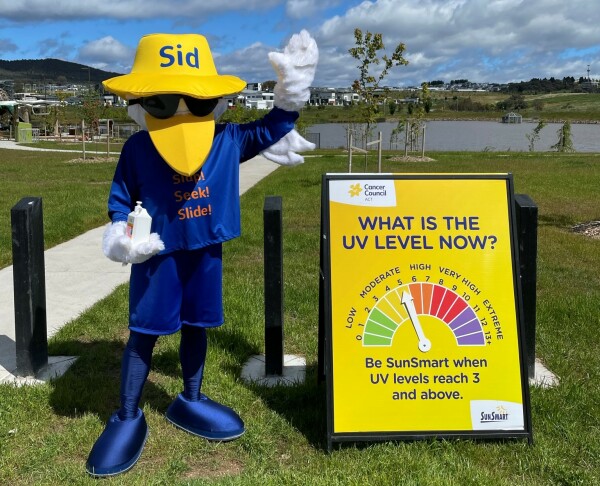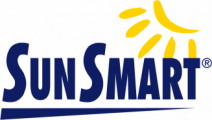
SunSmart is a skin cancer prevention program that aims to reduce the incidence and impact of skin cancer in the ACT. Cancer Council ACT provides leadership in skin cancer prevention and early detection through the SunSmart program via community engagement, education, multi-media campaigns and advocacy in early childhood, school, and workplace settings.
Find out about our SunSmart Schools and Early Childhood program and workplace education and training or book the FREE SunSmart events package - click the links below.
Skin Cancer Risks
Australia has the highest rate of melanoma and non-melanoma skin cancers in the world, with approximately 2 in 3 Australians diagnosed with a form of skin cancer before the age of 70 (1).
Over 95% of skin cancers in Australia are caused by UV exposure, which means that almost all are preventable. UV radiation isn’t like the light or heat seen or felt from the sun, and it can be just as high on a cool or cloudy day as it is on a hot one.
As little as 5 total sunburns during the early years of life can almost double the risk of skin cancer, with every instance of UV exposure further increasing this risk (3,4). Decreasing UV exposure by applying the 5 recognised sun protection measures at ANY age can reduce our risk of skin cancer (5).
Sun Protection
Sun protection is required when the UV level reaches 3 or above to minimise the risk of skin damage, including skin cancer, whilst spending time outdoors.
Download the SunSmart App to get real time UV information for your location.
To be SunSmart Cancer Council ACT recommend a combination of the five sun protection measures:
- Slip on some sun protective clothing that covers as much skin as possible.
- Slop on SPF50+ sunscreen: make sure it is broad spectrum and water resistant. Apply sunscreen at least 20 minutes before you go outdoors and reapply every two hours afterwards. Sunscreen should never be used to extend the time you spend in the sun.
- Slap on a hat that protects your face, head, neck and ears. Wide brim, bucket hats and legionnaires style hats work well.
- Seek shade whenever you can.
- Slide on some wraparound sunglasses that meet Australian Standard 1067.
Seek to minimise your outdoor activities and events, when possible, between 11am and 3pm from October to April as this is the time of the year when UV levels are at their strongest.
- Staples MP, Elwood M, Burton RC, Williams JL, Marks R, Giles GG. Non-melanoma skin cancer in Australia: the 2002 national survey and trends since 1985. Med J Aust 2006 Jan 2;184(1):6-10 [Abstract available at https://www.ncbi.nlm.nih.gov/pubmed/16398622].
- Fransen M, Karahalios A, Sharma N, English DR, Giles GG, Sinclair RD. Non-melanoma skin cancer in Australia. Med J Aust 2012 Nov 19;197(10):565-8 [Abstract available at https://www.ncbi.nlm.nih.gov/pubmed/23163687].
- Whiteman DC, Whiteman CA, Green AC. Childhood sun exposure as a risk factor for melanoma: a systematic review of epidemiologic studies. Cancer Causes Control 2001 Jan;12(1):69-82 [Abstract available at http://www.ncbi.nlm.nih.gov/pubmed/11227927.
- Pfahlberg A, Kölmel KF, Gefeller O, Febim Study Group. Timing of excessive ultraviolet radiation and melanoma: epidemiology does not support the existence of a critical period of high susceptibility to solar ultraviolet radiation- induced melanoma. Br J Dermatol 2001 Mar;144(3):471-5 [Abstract available at http://www.ncbi.nlm.nih.gov/pubmed/11260001].
- Armstrong BK. How sun exposure causes skin cancer: An epidemiological perspective In: Hill D, Elwood JM, English D. Prevention of Skin Cancer. Dordrecht, The Netherlands: Kluwer Academic Publishers; 2004. p. 89-116.
- Royal Australian College of General Practitioners. Guidelines for preventive activities in general practice. East Melbourne, Australia; 2012.
